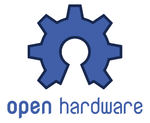
Microcontrollers are is a small computer on a single integrated circuit containing a processor core, memory, and programmable input/output peripherals. Microcontrollers are designed for embedded applications, in contrast to the microprocessors used in personal computers or other general purpose applications. Microcontrollers are useful for controlling open source hardware projects and tools like the RepRap 3-D printer.
Choosing an open-source microcontroller[edit | edit source]
Please add and edit.
| Board: | Arduino Uno | Arduino Leonardo | Arduino Due | MintDuino | Netduino | Netduino Plus | Raspberry Pi | Beagle Bone |
|---|---|---|---|---|---|---|---|---|
| Approximate Price: | $30 | $25 | $50 | $25 | $35 | $60 | $40 | $90 |
| Summary: | Current "official" Arduino USB board, driverless USB-to-serial, auto power switching | Somewhat experimental Arduino with HID support for mouse or keyboard emulation | Newest Arduino based on a powerful ARM Processor. Packs many new features in a Mega sized form factor. | An Arduino Compatible board you build yourself on a breadboard. | Open Source microcontroller. Programmed using the .NET / C# programming language. Uses an Arduino layout for shield compatibility. | Open Source microcontroller. Programmed using the .NET / C# programming language. Uses an Arduino layout for shield compatibility. | Single board Linux computer with video processing and GPIO ports | ARM Based hardware hacker focused Linux board. |
| Special Features: | Onboard USB controller | HID emulation, USB, SPI on ISP header | Android ADK Support, 2 12bit ADC / DAC, USB Host, CAN BUS support | DIY Arduino! | Programmed with .NET Micro Framework. | Programmed with .NET Micro Framework; Onboard Ethernet | HD Capable Video Processor, HDMI and Composite Outputs, Onboard Ethernet | Onboard USB Host and Ethernet |
| Processor: | ATmega328 | ATmega32u4 | 32-bit SAM3X8E ARM Cortex-M3 | ATmega328 | 32 bit AT91SAM7X512-AU | STMicro 32-bit microcontroller | ARM1176JZF-S | TI AM3358 ARM Cortex-A8 |
| Processor Speed: | 16 MHz | 16 MHz | 84 MHz | 16 MHz | 48 MHz | 168 Mhz | 700 MHz | 720 MHz |
| Analog Pins | 6 | 12 | 12 | 6 | 6 | 22 (GPIO - digital or analog) | 8 (GPIO - Digital and Analog) | 66 (GPIO - Digital and Analog) |
| Digital Pins | 14 (6 PWM) | 20 (7 PWM) | 54 (12 PWM) | 14 (6 PWM) | 14 | 22 (GPIO - digital or analog) | 8 (GPIO - Digital and Analog) | 66 (GPIO - Digital and Analog) |
| Memory | SRAM 2KB - EEPROM 1KB | SRAM 2.5 KB - EEPROM 1 KB | SRAM - 96 KB | SRAM 2KB - EEPROM 1KB | 128KB Code Storage | 384KB Code Storage | RAM 512MB | RAM 256MB |
| Programming Language | Arduino / C Variant | Arduino / C Variant | Arduino / C Variant | Arduino / C Variant | Microsoft .NET Environment | Microsoft .NET Environment | Any language supported by a compatible Linux distribution (such as Raspbian or Occidentalis)* | Includes Angstrom Linux on SD Card. Any language supported by a compatible Linux distribution (such as Ângström or Ubuntu)* |
| Programmer | USB, ISP | USB, ISP | USB, ISP | Requires programmer like FTDI Friend | USB | USB | You can run any of the Linux-compatible text editors and IDEs right on the Raspberry Pi. | You can run any of the Linux-compatible text editors and IDEs right on the BeagleBone or use the browser-based Cloud9 IDE from another computer. |
| Expansion | Shield Compatible | Shield Compatible | Some Shields (3v only) | N/A | Some Shields | Some Shields | Breakout boards such as the Pi Plate and Pi Cobbler. | Capes |
- Including Python, Scratch, Perl, Java, JavaScript/Node, C, C++, and Ruby. Normal 0 false false false EN-US X-NONE X-NONE

